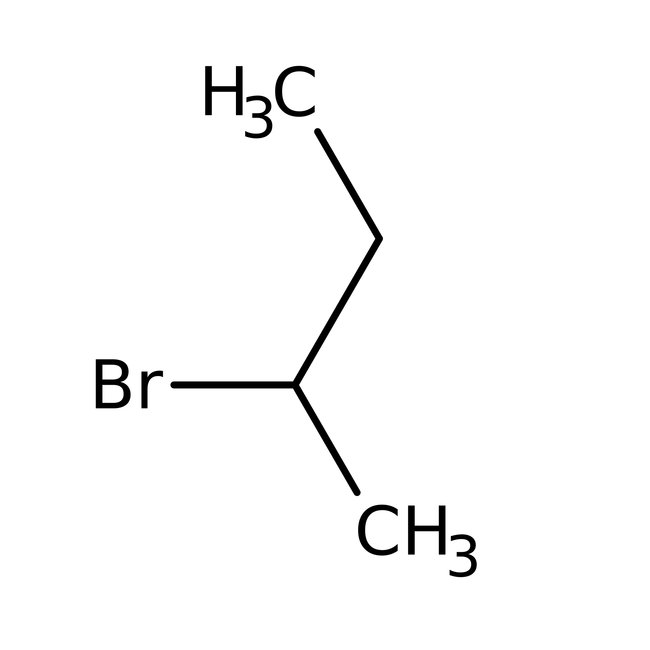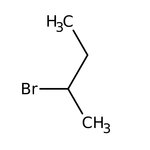Search Thermo Fisher Scientific
Thermo Scientific Chemicals
2-Bromobutane, 98%
CAS: 78-76-2 | C4H9Br | 137.02 g/mol
| Catalog Number | Quantity |
|---|---|
| ALFA15069.30 | 250 g |
Catalog number ALFA15069.30
View Price:Sign InSign in to see your account pricing. Need an account? Register with us today.
Quantity:
250 g
Specifications
Chemical Name or Material2-Bromobutane
CAS78-76-2
Health Hazard 1H225-H315-H319-H335
Health Hazard 2GHS H Statement
H225-H336
Highly flammable liquid and vapour.
May cause drowsiness or dizziness.
H225-H336
Highly flammable liquid and vapour.
May cause drowsiness or dizziness.
Health Hazard 3P210-P233-P235-P240-P241-P242-P243-P261-P264b-P271-P280-P303+P361+P353-P304+P340-P305+P351+P338-P312-P332+P313-P363-P370+P378q-P501c
View more
2-Bromobutane is utilized in the synthesis of non-nucleosides. It is used as a solvent as well as an intermediate in organic synthesis. It is an important raw material used to prepare Grignard reagent by reacting with magnesium. Further, it reacts with hydrocyanic acid to prepare sodium salt to get (+-)-sec-butyl cyanide. It is an important raw material used to prepare Grignard reagent by reacting with magnesium.
This Thermo Scientific Chemicals brand product was originally part of the Alfa Aesar product portfolio. Some documentation and label information may refer to the legacy brand. The original Alfa Aesar product / item code or SKU reference has not changed as a part of the brand transition to Thermo Scientific Chemicals.
Applications
2-Bromobutane is utilized in the synthesis of non-nucleosides. It is used as a solvent as well as an intermediate in organic synthesis. It is an important raw material used to prepare Grignard reagent by reacting with magnesium. Further, it reacts with hydrocyanic acid to prepare sodium salt to get (+-)-sec-butyl cyanide. It is an important raw material used to prepare Grignard reagent by reacting with magnesium.
Solubility
Miscible with alcohol and ether. Immiscible with water.
Notes
Incompatible with strong oxidizing agents, strong bases, magnesium, sodium, sodium oxides and potassium.
2-Bromobutane is utilized in the synthesis of non-nucleosides. It is used as a solvent as well as an intermediate in organic synthesis. It is an important raw material used to prepare Grignard reagent by reacting with magnesium. Further, it reacts with hydrocyanic acid to prepare sodium salt to get (+-)-sec-butyl cyanide. It is an important raw material used to prepare Grignard reagent by reacting with magnesium.
Solubility
Miscible with alcohol and ether. Immiscible with water.
Notes
Incompatible with strong oxidizing agents, strong bases, magnesium, sodium, sodium oxides and potassium.
RUO – Research Use Only
General References:
- Vatsal, A.; Zinjarde, S. S.; Kumar, A. R. Yarrowia lipolytica NCIM 3589, a tropical marine yeast, degrades bromoalkanes by an initial hydrolytic dehalogenation step. Biodegradation 2015, 26 (2), 127-138.
- Sannasi, V.; Jose, T. P.; Jeyakumar, D. Synthesis and optical properties of poly(2,7-(9,9-dihexylfluorene)-3,3'(4, 4'-dialkoxybiphenyl)). Des. Monomers Polym. 2015, 18 (1), 51-63.



